A climate-conscious ski trip? Yes, it’s possible
When push comes to shove we usually take the easy way out. But Axel Adolfsson and Victor Daggberg obviously aren’t like the rest of us. Along with their crew, including Protect Our Winters Sweden President Johnn Andersson and professional skier Tom Oliver Hedvall, and 300kgs of camera gear, camping equipment and food they made the 1,800km journey from Gothenburg to Katterat by train. But there was method to their apparent madness. They wanted to prove a point: it is possible to travel to the far-flung regions of the Scandinavian mountains by train and skis.

The big picture for Eisodus – the name of the film that resulted from their low-emission adventure – was to raise awareness about climate change and to show us all that we can make small changes that can help shrink our carbon footprints.
“We wanted the movie to say something. But we wanted to be humble about it. We want to show that by making small changes in our lives we can help the climate,” says Axel. “It’s about a journey towards being more environmentally conscious. You don’t need to do everything at once.”
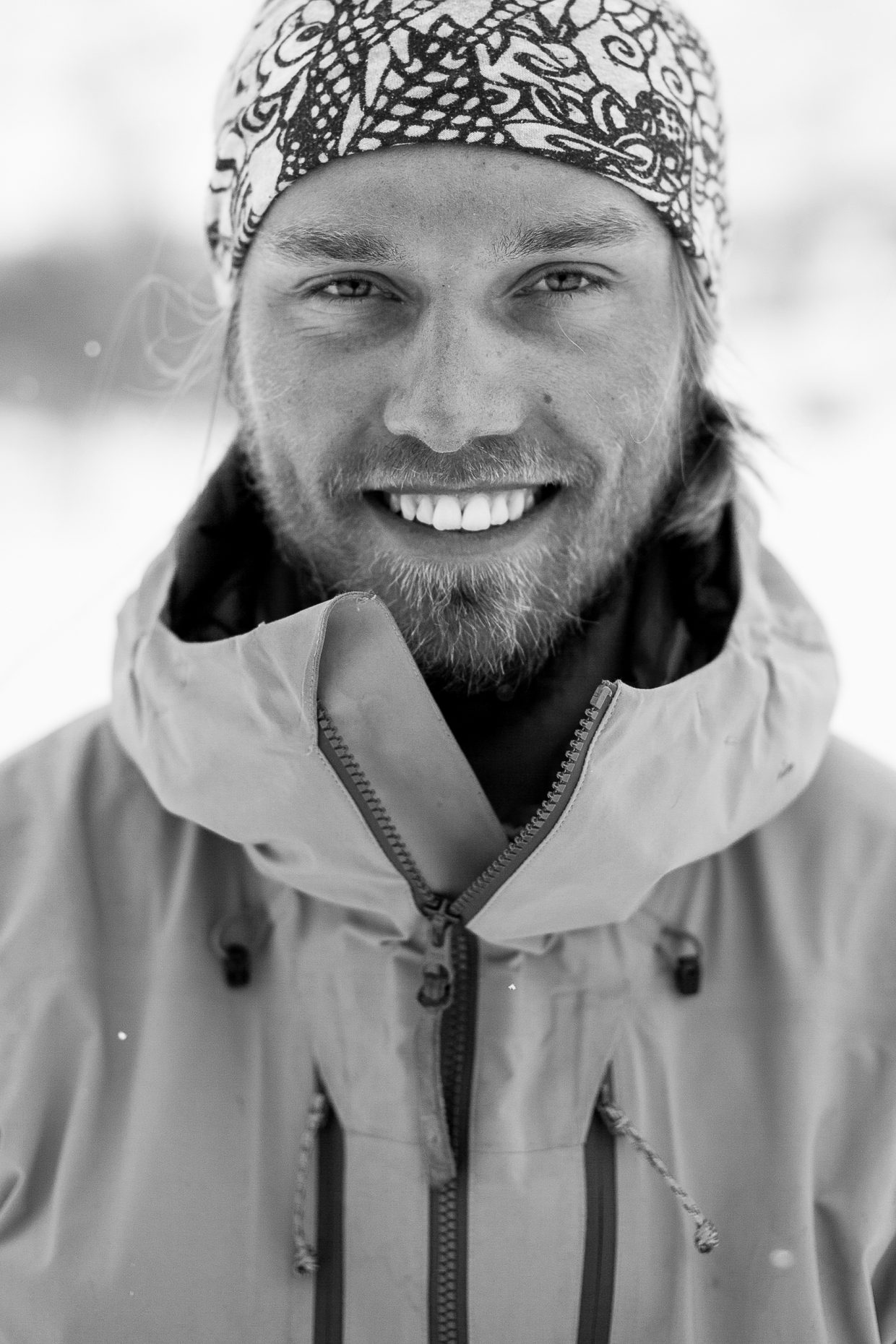
The film is not your typical ski movie, with section after section of deep powder turns, steep spine lines and cliff drops. In fact, the skiing is pretty low key. Unlike the big-budget cinema packers of the likes promoted by famous names in the ski industry, Eisodus doesn’t feature an extensive list of the ski world’s biggest stars. Instead it features Swedish local, Tom Oliver Hedvall – but don’t be under any illusions, he’s incredibly talented – and Johnn Andersson who aside from being the President of the Swedish outfit of Protect Our Winters – a climate advocacy group for the winter sports industry – he was Axel’s tutor at Chalmer’s University in Gothenburg and part of the reason this project got off the ground.

Axel, under Johnn’s guidance wrote a candidate essay on how climate change would affect the ski industry. His research planted a seed and once the written work was done and dusted Axel teamed up with childhood friend Victor to create a ski movie powered by more climate friendly means. Unsurprisingly for two guys that have grown up with their eyes firmly set on careers in the winter sports industry, the plans were epic in proportion.

“When we first presented the script to Johnn he was like ‘oh boy this is a big project’,” says Axel. But once Victor and Axel’s brother had finished working on the script; once they’d enlisted drone cinematographer Troels Rosenkrantz Andersen and rustled up some sponsors, Johnn’s ‘oh boy’ became an ‘oh yes’. Not only did Johnn get fully behind the project offering help, guidance and contacts, he also agreed to star in it.
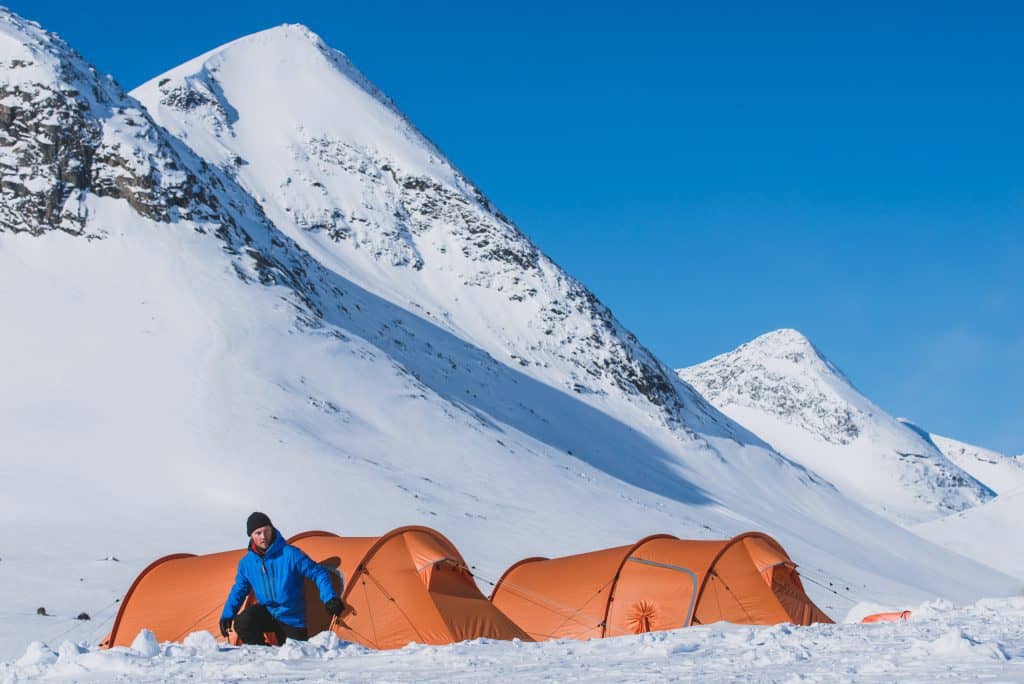
‘Project’ is a bit of an understatement. The 300kgs of gear consisted of Hollywood style cameras, tents and clothing from us at Fjällräven, everything you could need for a week in an off-the-grid cabin, oh and an industrial size storage and battery system in custom-built plastic cases. All that went on a train. Then sleds, which were dragged several kilometres over new snow by six mountain-loving individuals. No chair lifts, snowmobiles or helicopters. This leg of the journey was powered by legs only.
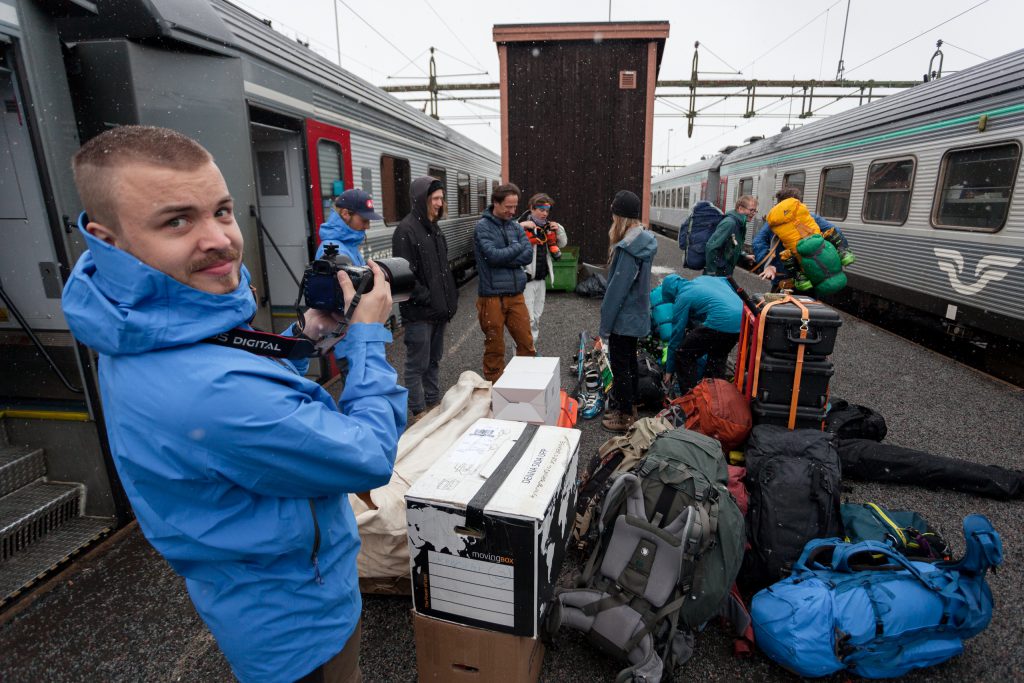
“It was snowing a lot when we arrived,” explains Victor. “And I thought this is going to be a great ride tomorrow. But dragging that heavy sled for like 10km on new snow was tough. I actually hated fresh snow for a while.”
The film successfully captures the bigger picture (minus the extreme struggle of carting 300kgs of stuff around on a train and skis).
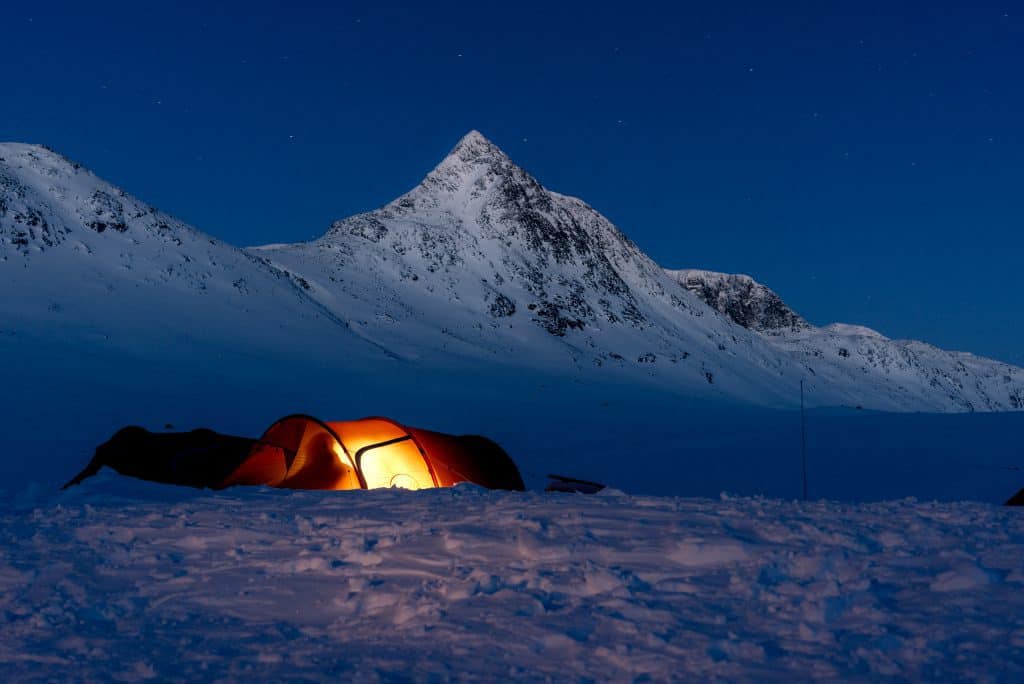
You get that warm fussy feeling inside when you watch it. The one that all backcountry skiers get when they see others enjoying steep, deep snowy rides down nature’s greatest creations. But cosy cabin moments, slow skin-up accents and lazy hours gazing out of a train window feature too.
Victor: “We wanted to show the entire journey: time on the train, in the cabin and so on, because skiing is so much more than just skiing. We wanted to show everything around it.”
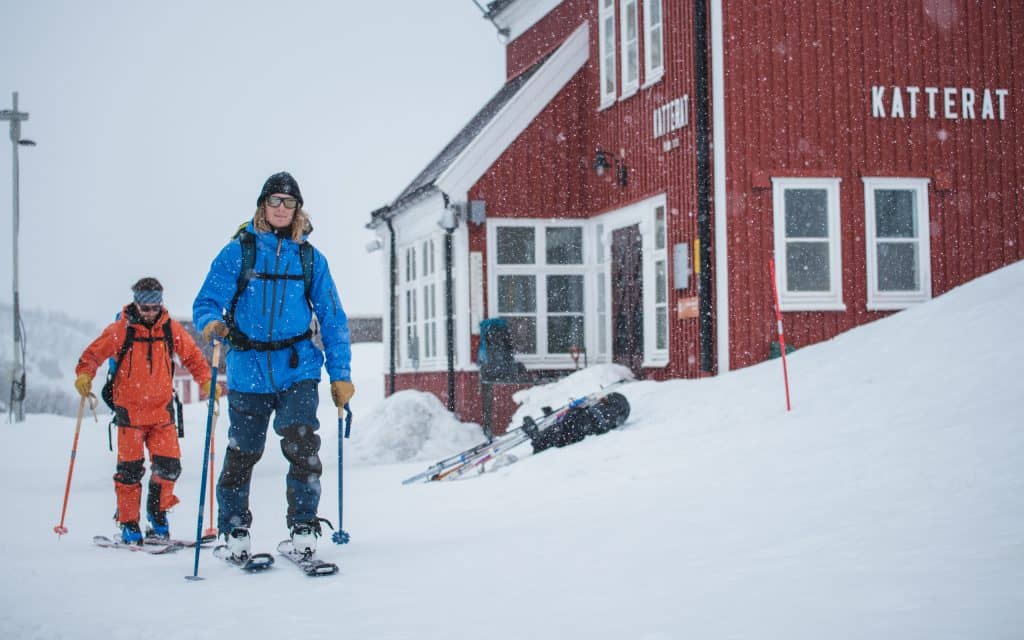
The film also works as a metaphor. The journey to becoming more climate conscious and living more sustainably, when taken as a whole, looks daunting. It looks too hard for most of us. But once broken down into bite-size portions it’s much more digestible.
“If you start opening your mind to look for sustainable solutions, you will find them,” says Axel. “It needs more effort, but the experience is often better as a result.”
“It’s like with skiing when you’ve hiked your way up to the top of the mountain,” adds Victor. “You really earn your turns and this heightens the feeling and makes everything much more worthwhile.”
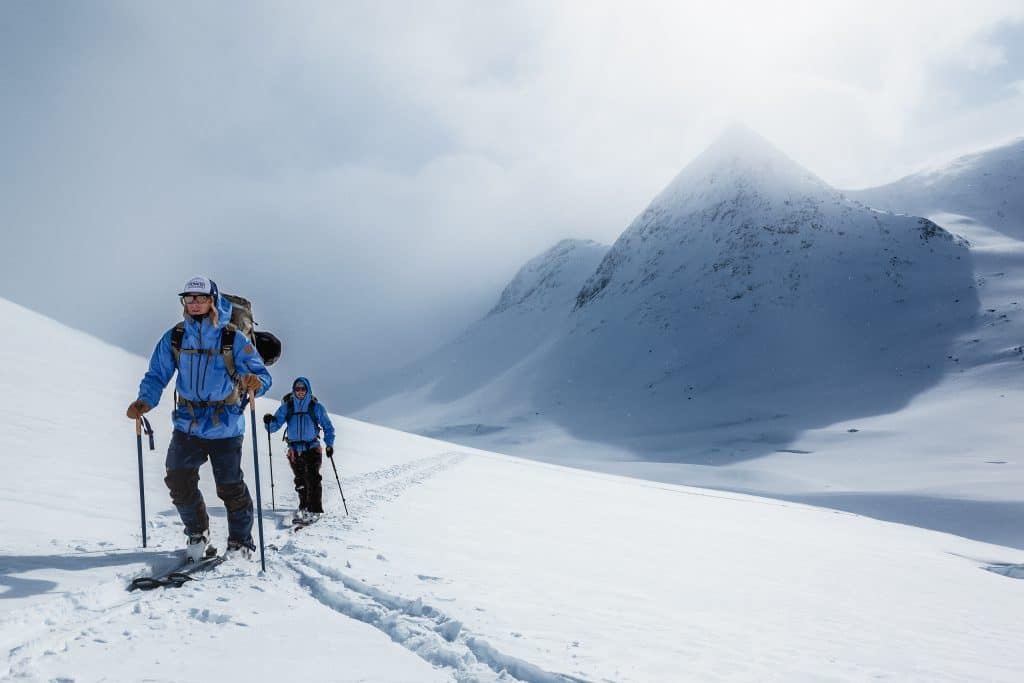
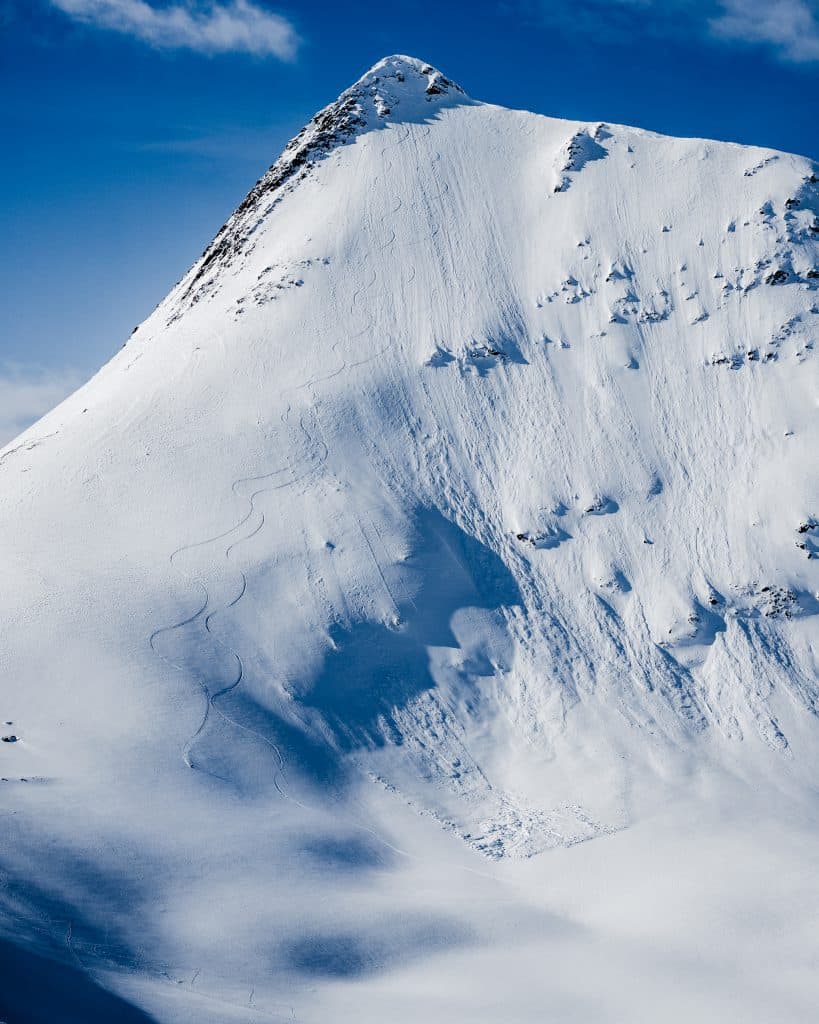
Neither Axel nor Victor want to preach. They know we’re not living in utopia. Sometimes we have to do things, like flying instead of taking the train, that expand our carbon footprints. The film isn’t here to be condescending. On the contrary; it’s inspiration.
“It we were to summarise how we’d like people to feel after watching the film, we’d say ‘open minded’, both about the skiing and about the travelling.”
Images: ©Gustaf Adolfsson 2017 Three Piece Media Production AB
